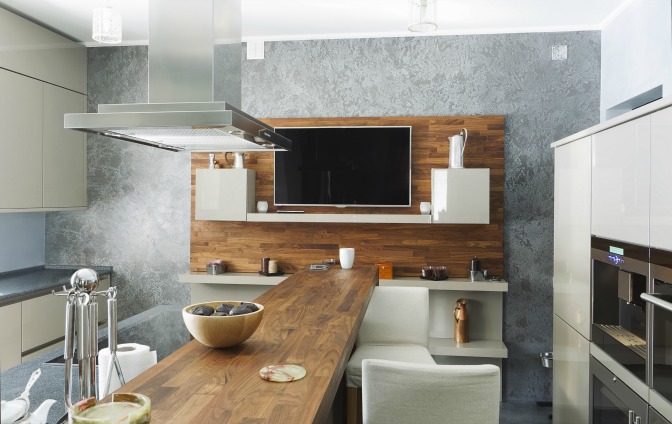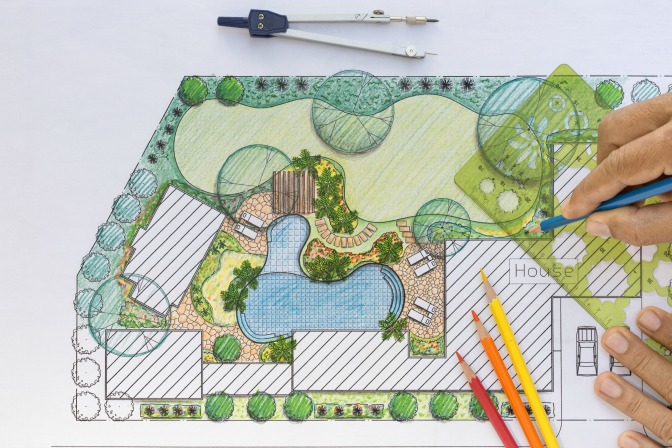Now that you have a few projects under your belt, it’s time to present yourself as the successful interior decorator you are!
There’s a lot to consider when organizing a portfolio…what should you include? What shouldn’t you include? When it comes to filtering through your own designs, try recruiting some help from colleagues and friends. They’ll give you a fresh perspective and help you form a business personality.
What’s more, you’ll need to find ways to improve upon your existing designs. How you present your portfolio is how you present yourself. By adding reasoning and meaning to your designs, you give each project a personal touch.
Need some ideas for vamping up your designs? Follow this basic how-to guide for beefing up your portfolio and impress even the toughest clients!
Get a Good Word In
As with any job, a good reference can make a huge difference in your career. It’s important to acknowledge your clients’ appreciation and harness their kind words. This all helps to project your talent, and gives you credibility as an interior decorator!
Good referrals can make any type of portfolio stand out. It proves your ability to connect with clients and involve yourself in design plans. A pleased client can help you succeed in getting another contract—just ask if they’re willing to recommend you!
Present their comments with a picture of the finished design—this lets possible clients to see the specifics right on the page!
Show Your Motives
So you brought a long-awaited design dream to life! That’s cool…but why?
Be prepared to explain yourself. As an interior decorator, you need a reason for why you chose certain materials and arrangements in addition to how you used them.
Why did you include a large wall mirror in the entrance? Or why use stools rather than chairs in your client’s kitchen? Although the answers might be self-explanatory, prepare your reasoning nonetheless. Even if it was just a simple question of space during a redesign, this gives reason to your designs.
Originality
It’s true that many designs can look the same, so you’ll need to give each of your designs a unique flair. Ask yourself: what sets you apart from any other interior decorator?
It’s as simple as incorporating plants, certain light fixtures, or a unique countertop shape. A little flair goes a long way in showing you have a knack for imagination! Remember that you still need reasons for creating your designs. Creativity is key, but your plans need to be practical.
If you’re good at mixing styles or trends, be sure to show examples of these designs. Something like incorporating modern styles into ageing homes, or turning the usual suburban home into a cottage-like getaway helps you stand out from other interior decorators.
Pro Tip: Many clients want something different from what they’re used to, but also want their home to be timeless and sophisticated. Choose designs that are trendy in a subtle way instead of using intrusive statement pieces.

Include Challenging Cases
If you get the opportunity to work with a challenging space or a client with a particularly imaginative mind, include them in your portfolio! Even if the designs didn’t turn out as expected, show off what you’ve learned. Taking chances is a huge part of creating your image as an interior decorator.
Any success comes from making mistakes and learning about what doesn’t work for you. You can create trust with a client by showing them what went wrong AND how you fixed it. No one wants to hire someone who isn’t willing to admit their mistakes. Show off your problem-solving skills from the get-go!
Tell a Tale
It’s all well and good to design an attention-grabbing room—but what’s the point you’re trying to make?
Your explanations don’t need to be lengthy, just speak from the heart! What made you design this room? Was there a certain picture or time period you had in mind? Let your clients know about your vision. A specific direction shows passion and logic.
Take a unique bathroom, for instance. If you chose that open shower space and smooth rock tile to inspire a tropical feel, then keep the rest of the room in tune with that idea. Some small bamboo sticks or a transparent sink keep your design true to the mind’s eye.
Marketing
When we say golden arches, what restaurant do you think of?
Now, we know you probably don’t want your designs associated with fast food. The point we’re making is this: marketing your decorating business is absolutely vital for promoting yourself and kick-starting your career. Make a memorable business slogan or design!
It can be as simple as using bright colors, or making a personal logo. Adding a visual element to your name can help clients remember your work.

Keep It Short and Sweet!
It can be hard filtering through your designs and old projects, but you can’t include everything in just one portfolio.
Start from your latest project—you’ll probably notice a specific style in your newest designs. People are always changing, and so are our tastes. You want to demonstrate versatility while also showing your clients a personal creative vision.
We’re not saying you need to go crazy with the cuts, either. Find a happy medium where you can present your favorite designs AND show what inspires you to decorate. Your portfolio needs just enough to show what you’re capable of.
Then and Now
A cool idea for your design portfolio is to present each of your projects in the same way. You could use a then and now photo contrast to introduce each redesign, and then show the step-by-step process.
This gives your portfolio a wow factor. It’ impressive for clients to see a huge improvement on a room before you explain how you did it. This generates intrigue around how you created the design. It’s just like giving them a behind-the-scenes look. A simple, yet effective tactic!
Not only does your portfolio present your designs, but it can also determine the direction your career will head in. Concentrate on what makes you passionate about interior decorating. The motivation behind your designs will shine through and catch the right client’s eye. Lead yourself to success by following your creative drive!


